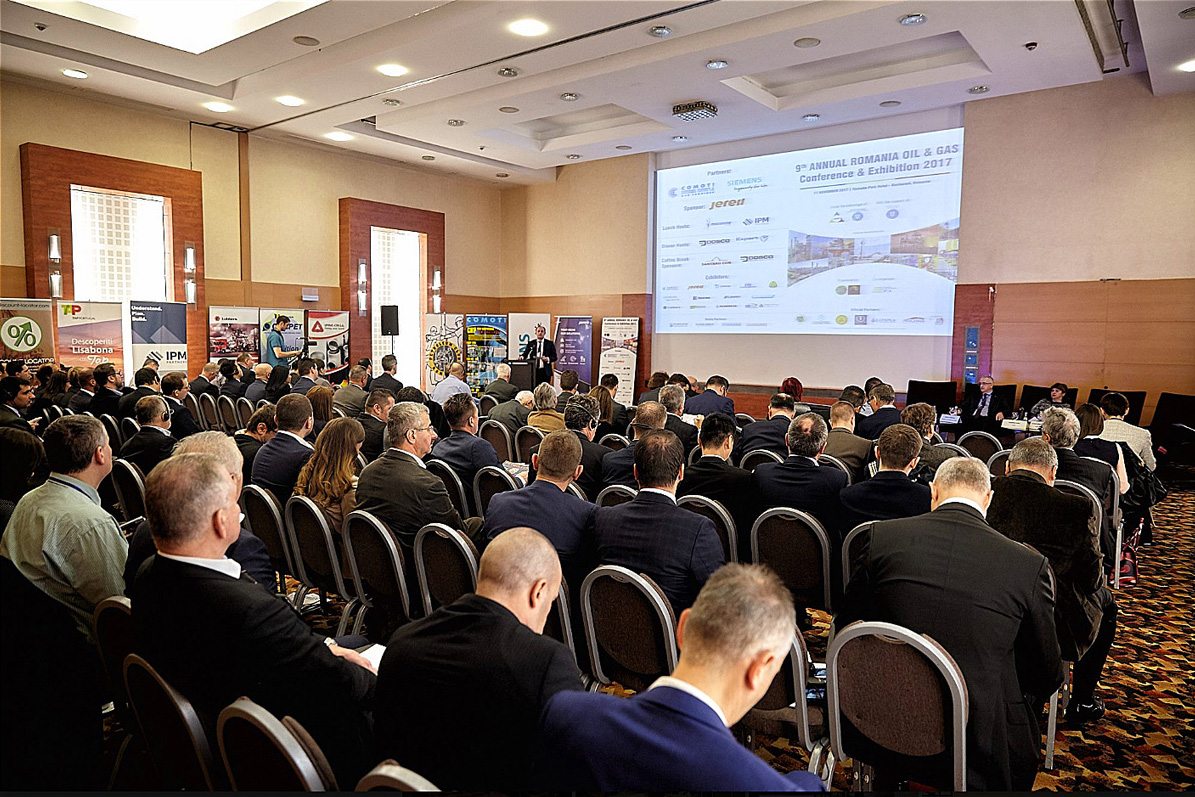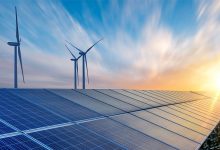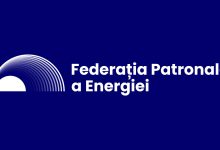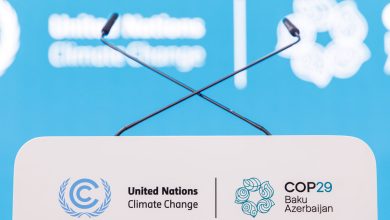ROGC 2017: Unlocking Romania’s hydrocarbon potential
Following a certain stabilization of the oil price lately, a recovery of exploration and production activities has been noticed in the Balkan and the Black Sea regions. More than seventy onshore and offshore blocks are to be explored and then exploited in the Balkans, with the most promising being in Greece, Montenegro, Bulgaria and Croatia. In turn, Romania provides a number of significant opportunities, having the chance of becoming a natural gas hub by 2020, when it is expected to complete the gas pipeline that will interconnect the national networks of Bulgaria, Romania, Hungary and Austria (BRUA). Thus, the contracts for the execution works related to the gas transmission pipeline, Phase I, were signed in Bucharest at the end of November 2017. The pipeline would be completed by December 2019, as ExxonMobil and OMV Petrom are expected to begin extraction of natural gas from the Black Sea in 2020. In this context, within the event ROMANIA OIL & GAS Conference & Exhibition (ROGC), carried out in Bucharest on 21 November 2017, major topics of the national and regional energy situation have been discussed, providing the participants – government officials, directors of companies, Romanian and international experts, academicians, consultants and other businessmen within the sector – with a platform to debate ideas and find innovating technological solutions to support the sustainable development of the oil and gas industry.
The debates were mainly focused on the current situation in the energy industry, priorities of the National Energy Strategy, legislative measures, implications, challenges for the oil and gas industry, programs for the efficient use of resources and cutting costs, safety and security at work, strategies and plans for the future of companies in the energy sector.
Structured in four sessions, of which three exclusively technical and two keynote speeches, the conference has occasioned interactive discussions between speakers and audience, to better understand the topics presented.
Setting the scene
In the opening of the conference, Andrew Costin – President of the Petroleum Club of Romania (PCOR), has noted some of the most important challenges currently faced by the industry at global level, either geopolitical and/or geo-economic challenges or of other nature, such as increasing the demand, increasing the energy efficiency, energy security, technological evolutions, respectively environmental regulations – decarbonization, competitiveness etc. The President of the Petroleum Club has addressed companies in the field with the urge to embrace change and find together solutions to the problems they face.
A stable energy sector, with a balanced mix of resources and huge opportunities for investors
The Romanian energy sector is currently stable, with a balanced mix of resources, estimates Iulian-Robert Tudorache – State Secretary within the MINISTRY OF ENERGY, coordinator of the oil and gas sector, who has also mentioned however some shortcomings of the sector, requiring improvement. “The Romanian energy sector has been deprived of major investments over the past 10 years, many of the energy transmission and distribution facilities being obsolete and technologically outdated. We have an exceeded lifetime for a large percentage of the gas transmission pipelines and a low level of funding sources compared to the investment requirements for the NTS structure, a non-homogeneous structure of pressures that cause us problems in ensuring the necessary pressures at the extremities of the system.”
According to the official from the Ministry of Energy, investment in the exploitation and production system and transmission infrastructure is urgently needed, in order to avoid major problems in terms of Romania’s future reliance on imports. He has highlighted that, besides stability and predictability, rightly requested by investors, the energy system in Romania may provide huge opportunities to those interested in doing business in our country. “When you discover the opportunity, and see that it is significant, you take the risk. Maybe we manage to balance a little our lack of stability and predictability, showing the Romanian and foreign partners with investment appetite that the energy system in Romania has huge opportunities for development and investments”.
The State Secretary has also mentioned that important steps have been taken to correlate the domestic infrastructure with the international corridors, the most significant example being the BRUA project. Other major examples, regarding the potential of onshore and offshore resources, are the Caragele project – the largest onshore gas field discovered by the Romanian state over the past 30 years, and the development of resources in the Black Sea by attracting companies that hold performing technologies and know-how.
Last but not least, the official has added, it is necessary to adopt as urgent as possible the National Energy Strategy, document with decisive implications in the energy sector and in the economy of the country. Equally important is also the development of energy partnerships with foreign partners and involvement in regional cooperation programs, contributing to the promotion of Romanian companies abroad.
Iulian-Robert Tudorache has also made special references to the Romanian high-class school in the oil and gas sector, appreciated at global level, given that in 2017 we celebrated 50 years of specialized university education.
In light of the latest developments in the energy sector, Romania, the fifth largest producer of oil and gas in Europe, can become a stability factor in the region, says Florina Sora – Senior Advisor, National Agency for Mineral Resources (NAMR). This, despite the fact that hydrocarbon production has experienced a sharp decline over the peak period of the industry, with over 70% of production being lost. Moreover, after 10 licensing rounds, organized in the period from the establishment of the agency (in 1993), the major objective of NAMR continues to be stopping the production decline, by using advanced technologies and know-how, contributing to an increased recovery rate in the fields, both onshore and offshore. However, in order to attract investors, it is necessary to have an attractive framework, the NAMR official has also pointed out, adding that currently there are good premises, new laws being in debate – the law on royalties and the law on the safety of offshore petroleum operations – which supplement the Petroleum Law.
160 years of Romanian oil
As expected, the 160th anniversary of the Romanian oil industry was also marked by the ROGC 2017. The series of events dedicated to this anniversary, presented extensively in the previous editions of the Petroleum Industry Review, was remembered by Mihail Minescu – Vice-Rector, Petroleum-Gas University (UPG), who thanked everyone who contributed to the celebration and the album ‘Romanian Oil – 160 Years of Illustrated History’.
EU R&I Energy policy – Transforming the future European energy system
Reiterating the five dimensions of the energy unions, Andreea Strachinescu – Head of Unit – New energy technologies and innovation, DG ENERGY, has brought to the audience’s attention the provisions of the Clean Energy for All Europeans package, focused on efficiency and consumers first and Strategic Energy Technology (SET) Plan, which has as a general objective to accelerate the development and implementation of low-carbon technologies, through cooperation between EU states, companies and research institutes, based on common priorities, targets and actions. The theme ‘Smart Cities and Communities’ was also mentioned within the ‘Horizon 2020’ program, which has so far benefited from a total co-financing of EUR 270 million. The representative of the European Commission has also mentioned that financing granted by the European Investment Bank in the energy sector amounts to about EUR 10 billion per year. The Connecting Europe Facility program (2014 – 2020) is yet another instrument dedicated to supporting infrastructure projects in areas such as transport, energy and telecommunications, benefiting from a total funding of EUR 30.4 billion, of which EUR 5.35 billion in the energy sector. Also, within the ‘Horizon 2020’ program, funds allocated to research and innovation reach a value of EUR 80 billion, of which EUR 5.9 billion are intended for the energy sector.
New technologies to reduce costs, improve efficiency and maximize competitiveness
‘Pumping up the oil & gas industry – dedicated solutions’ was the theme of the presentation of INCDT COMOTI representative, Leonard Trifu – Marketing Manager. It marked important milestones of the institute between 1985 and 2015, highlighting the main features, applications and beneficiaries of gas compressor equipment and the expander group – electrical generator executed by the company.
The National Research & Development Institute for Gas Turbines – COMOTI – is the only specialized unit in Romania which integrates scientific research, design, manufacturing, experimentation, testing, technology transfer and innovation of aircraft turbo-engines, industrial gas turbine engines and high-speed blade machines. The experience gathered in the field of high speed blade machines allowed the development, in own conception, of series of electrical centrifugal natural gas or air compressors and electrical centrifugal air blowers in a large variety of flows and pressures, making COMOTI the only national producer for such complex equipment.
A reference name of the energy industry in Romania and beyond, SIEMENS proposes an advanced solution for well monitoring, based on IoT and reservoir analytics, which contributes to optimizing production and reducing costs. Helmut Schnabl – Business Development, has extensively presented the implementation, as well as the benefits of this technology: production optimization, early production losses identification; minimized well interventions/workovers; maintenance optimization. According to Siemens representative, the next S-Curve in O&G competitiveness and efficient operation will come from digital and advanced analytics. Siemens IoT well surveillance addresses field operation and oilfield artificial lift control. This innovative solution offers companies across the oil and gas industry a cost-efficient solution to link distributed assets into an integrated network with minimal effort, while simultaneously providing a high level of automation.
Leveraging the resources & creating value through integrated product-service solutions are major concerns of the Chinese provider of integrated solutions at global level – JEREH GROUP, whose main areas of activity are oil & gas, power and environment. The company has representative offices in over 50 cities, providing products and services in over 60 countries. Leo Liu – Director, Central & Eastern Europe – has reported about the capabilities, investment policy, products and services offered, as well as about the HSE policy. Otherwise, this is the first company in China to pass API QHSE and Q2 certification. Every year, Jereh spends 5% of the annual sales revenue on the in-house R&D activities and collaborative technology development with external research institutions, the manager underlined. The Group’s most important strengths are efficiency and flexibility, since an integrated solution offers more choices from investing, financing to contracting, he believes. Also, another benefit is given by the one-stop service concept, which promotes execution efficiency and cost effectiveness. Also, the global best practices improve the efficiency of transfer of technology, know-how and experience. In conclusion, the mechanism of Chinese private enterprises enables quick decision and flexible implementation.
The paper presented by Prof. Andrei Dumitrescu Ph.D. Eng., PETROLEUM-GAS UNIVERSITY (UPG) – ‘Investigations regarding the construction, exploitation and maintenance of natural gas transmission pipelines systems’ – was based on the work carried out by a group of professors from the Mechanical Engineering Department, made up of Prof. Gheorghe Zecheru Ph.D. Eng., Prof. Andrei Dumitrescu Ph.D. Eng., Assoc. Prof. Gheorghe Draghici Ph.D. Eng. and Assist. Prof. Alin Dinita Ph.D. Eng., within the project INNOPIPES (Innovative non-destructive testing and advanced composite repair of pipelines with volumetric surface defects). The strategic objective of the INNOPIPES project is the improvement of infrastructure in the EU and third countries by increasing the reliability of existing transmission pipeline systems from the petroleum industry. Advanced solutions have been analysed and proposed regarding the main issues related to the creation, design, execution and verification of maintenance works for gas transmission pipelines. The evaluation included technological particularities in the case of using welding for the repair of pipelines (decommissioned or during operation) and the repair with composite coatings. The results of the researches included in the paper were and will continue to be applied to the activities of repair, rehabilitation, refurbishment and upgrade of the pipelines that make up the National Gas Transmission System, the academic specified.
Recent legal developments in the Romanian Upstream sector – New royalties scheme and offshore law
The law regulating the royalty system for concessions of mineral, petroleum and hydro-mineral resources, a hot topic of broad interest and strongly publicized, has been on the government’s agenda for more than three years. In late October 2017, the Ministry of Economy finally launched for public debate the new draft law on the subject. The latest legislative evolutions in the Upstream segment – the new legal framework proposed and the offshore law – were commented by Catalin Barb – Senior Associate, LEROY SI ASOCIATII. He pointed out the context in which the respective changes were made, the calculation of the new royalties for both onshore and offshore, the most important changes, the main provisions of the offshore law.
Regarding the reference price, considered to determine the royalty, it will no longer be reported to the Suez Blend oil, but to Brent oil, and for natural gas the new reference price will no longer be set by the National Agency for Mineral Resources, following to be given by gas prices on the centralized wholesale market – OPCOM. New developments have also been mentioned, such as the transmission surcharge, whose quota hasn’t been determined yet, applied on the gross income obtained from petroleum transmission operations through transmission systems, other than the National Petroleum Transmission System, and from petroleum operations carried out through the petroleum terminals, other than those in state ownership.
Role and importance of interconnection projects
Through its geographic position and potential, Romania may play an important role in the regional energy equation, not only by capitalizing on its own resources, but also through involvement in the redistribution of energy resources in the region. Thus, implementing the strategic interconnection projects becomes a priority.
For CONPET, the national oil and petroleum products transmission operator, the strategic priority within the company’s development strategy is to interconnect the national oil transmission network at regional and European level, Mircea Aurel Nita – Head of Communication, Public Relations and Administrative Management Department, informs. This strategic country objective includes securing the supply of crude oil to the European Union and diversification of supply sources and transmission routes. The solution for security energy supply to the European Union is, in Conpet’s vision, the Pan European Oil Pipeline (PEOP) project, ensuring the interconnection with bidirectional flow with the transmission systems of Serbia and Croatia to Italy, in Trieste. Besides the possibility of interconnection with the oil transmission systems of the neighbouring countries, Romania would thus have an alternative to supply its domestic refineries, in the event of blockage at the Black Sea, from Trieste and Omišalj to Romania, through the systems operated by Janaf Croatia, Transnafta Serbia and Conpet. Also, PEOP project provides a number of opportunities, from both a domestic and foreign perspective, especially in view of the fact that Romania will hold the presidency of the EU Council in 2019.
Another project particularly important at regional level, as after commissioning it will ensure the integration of gas sources from the Southern Corridor with the Central and Western European markets, is the Bulgaria – Romania – Hungary – Austria (BRUA) project. It is part of Transgaz’s Development Plan for 2014 – 2023 and is included on the list of projects of common interest adopted by the European Commission. Within this project, which will connect the gas networks of the four states and facilitate gas export from the Black Sea, a premiere has been recorded at European level. It’s about the Danube undercrossing by a pipeline that will ensure gas transmission between Romania and Bulgaria, with a volume of approximately 1.5 bcm/year. Companies involved in this strategic project are, together with Transgaz, Inspet Ploiesti and Habau PPS Pipeline Systems, the latter executing the drilling works. The actual length of the undercrossing is 2,100 meters, from the Comasca valve assembly (Romania) to the similar group in Marten (Bulgaria). How did this extensive work take place, as well as the biggest challenges faced by the operators, we learned through the video presented by Karl Leidenfrost – Managing Director, HABAU PPS PIPELINE SYSTEMS.
Projects of such complexity would not be possible without the consistent support from international financial institutions. One of them is the European Bank for Reconstruction and Development (EBRD), owned by 66 states and two intergovernmental institutions – the European Union (EU) and the European Investment Bank (EIB), benefiting from a capital of EUR 30 billion. EBRD’s financing list includes a number of energy interconnection projects, including BRUA project, but not only, Mihnea Craciun – Deputy Head of Romania, detailed. In Romania, the European institution invests, together with Carlyle Group, in offshore exploration projects in the Black Sea, supports the modernization of the national gas transmission system, promotes gas market liberalization and interconnection projects, for Romania to become a regional gas hub, supports the offshore directive concerning the safety of petroleum operations, by providing a grant of EUR 285 thousand (technical assistance) to the Competent Authority for the Regulation of Offshore Petroleum Operations (ACROPO). EBRD also provides support for the construction of the Ungheni – Chisinau gas interconnector, by providing a grant of EUR 41 million, plus another EUR 41 million from the EIB and EUR 10 million from the EU.
The main European hubs and energy exchanges providing natural gas trading services include the pan-European platform PEGAS and the Austrian hub CENTRAL EUROPEAN GAS HUB (CEGH), operating in Central and Eastern Europe. Details about the characteristics, products and services, trading mechanisms used, basic principles, annual trading volumes, including members registered were provided by Attila Török – Head of Gas Exchange Services, CEGH. He mentioned that as of 1 December 2016, CEGH joined the PEGAS platform, created by Germany’s EEX Group and operated by France’s Powernext. The criteria determining the success of a hub, presented by Attila Török together with a best practice model, include infrastructure – pipelines and storage capacities, diversification of supply sources, market liberalization, confidence of market participants, and so on.
In October 2017, the mentioned European operators warned that Romania was subject to infringement, due to amendments brought to the law approving GEO 64 on the gas market, which impose the obligation to trade 70% of production through OPCOM exchange.
Unlocking the value of production, gas market liberalization, and certifications
With a history starting more than 100 years ago, ROMGAZ is the largest owner of reserves, producer and supplier of natural gas in Romania. Due to investments made, the company managed to slow down natural decline of production and the largest gas discovery of the last 30 years, totaling 30 billion cubic meters, was announced in May 2017, in Caragele (Buzau County). But assuming the decision to develop a new gas discovery involves a complex process of assessment and analysis, taking into account a number of indicators and impact factors. The stages of this process that ends with making the exploitation decision were explained by Alexandru Popa – Drilling Engineer, in a paper coordinated by Eugen Sorescu – Director Exploration Department. The combined appraisal strategy, which includes exploration, evaluation and development of resources, finally leads to the preparation of the development plan for the field. Following the analysis conducted, based on field’s characteristic data and with analytical simulation models, the success rate and profitability of the respective project can be estimated.
Case studies on technologies intended to reduce the decline of hydrocarbon production were also presented by the representative of SCHLUMBERGER, the largest global supplier of technologies and solutions for oil and gas companies. Jonathan Abbott, Stimulation Technical Manager (Europe), presented the most relevant examples regarding the use of new technologies applied for mature fields in order to maximize production and reservoir drainage. Among them, a stranded oil case study from Romania (channel fracturing). The results show a significant improvement of the performance index (PI), while cutting costs compared to the conventional fracturing methods. The HiWAY flow-channel fracturing technique from Schlumberger significantly increases fracture conductivity while reducing water and proppant consumption. This means higher short- and long-term production, simpler logistics, and a smaller operational footprint. In conclusion, the responsible development of hydrocarbon resources in mature fields involves the application and adaptation of technology, investments in the development of new technologies, a good planning and close collaboration with partners in the industry.
The gas market liberalization process in Romania, which has sparked a number of controversies, is still in debate, and stakeholders are far from an agreement. The main challenges of this process were highlighted by Harald Kraft – President, Romanian Petroleum Exploration and Production Companies Association (ROPEPCA). The association, which currently includes 17 members and provides more than 15,000 jobs, has invested around 1.3 billion euros annually in the recent years, and contribution to the state budget has reached about 2.5 billion euros/year. With an undeniable positive impact on Romania’s trade balance, ROPEPCA has a trenchant view on legislative changes in the oil and gas sector. The Association believes that the liberalization process does not justify the supplementary charge applied to oil and gas companies, especially since Romania has one of the highest taxation levels for the oil and gas sector. ROPEPCA has identified a number of adverse effects in terms of the obligation proposed for gas producers to trade the entire amount of gas produced domestically exclusively on the Romanian gas trading platform for an unlimited period of time. This would involve restrictions on bilateral contracts agreed through direct negotiation, on cross-border supplies of natural gas agreed through direct negotiation, representing in fact a prohibition of direct bilateral trading of natural gas with suppliers, traders and consumers in other Member States. Gas exports will also be affected, as well as producers’ right to dispose freely of the natural gas produced, as stipulated in the concession agreements concluded with the Government of Romania. “In order to maintain a constant level of oil and gas production, there is a need for significant investment and a stable, balance and predictable fiscal framework, as well as a free marketplace that allows the setting of fair prices, reflecting the realities that determine the evolution of the industry”, the President of the Association concluded.
Last but not least, the most important provisions regarding certifications in the oil and gas industry were emphasized. Cantemir Mambet – Risk & QHSE Expert, listed a number of major challenges and opportunities regarding ISO 45001, the first international OH&S standard, currently under development, which will help organizations implement a health and safety management system. It is expected to be published in March 2018.







